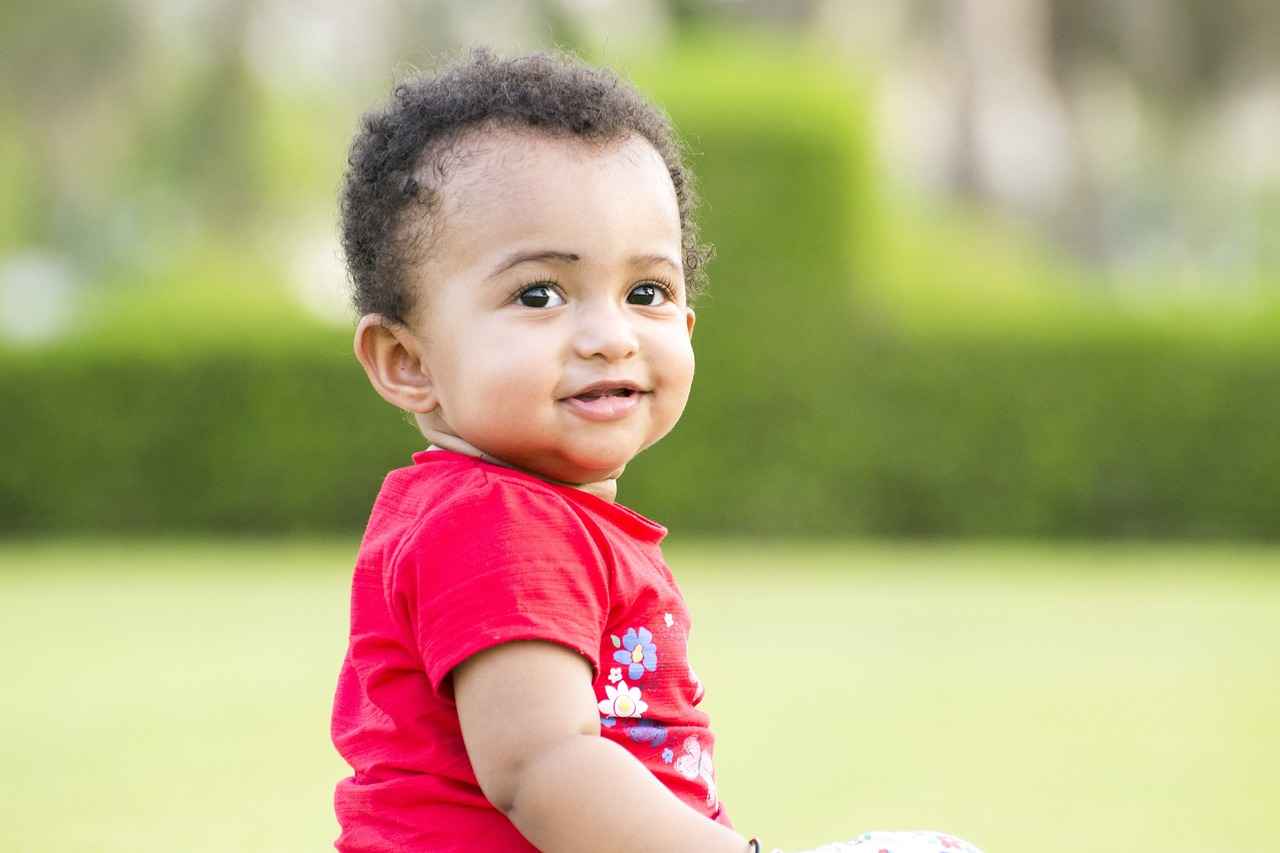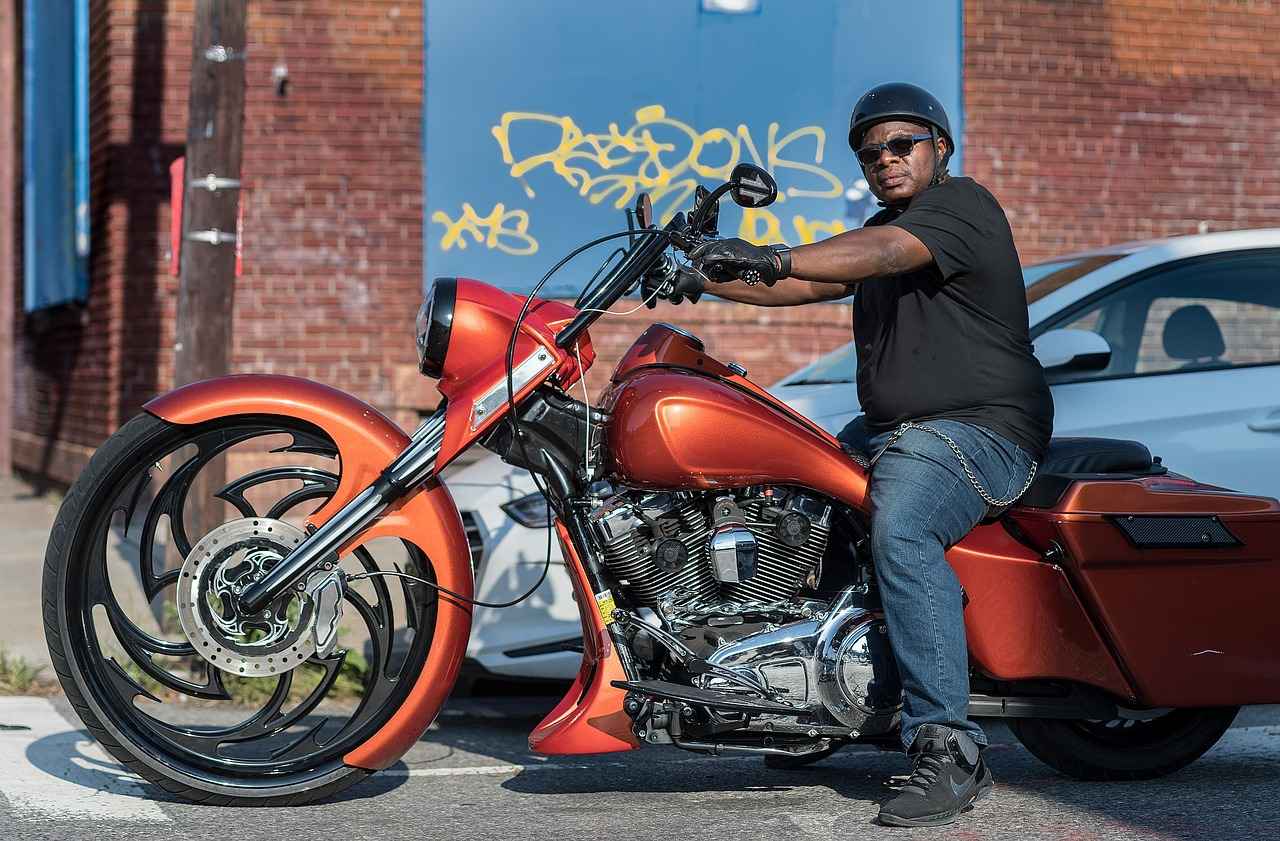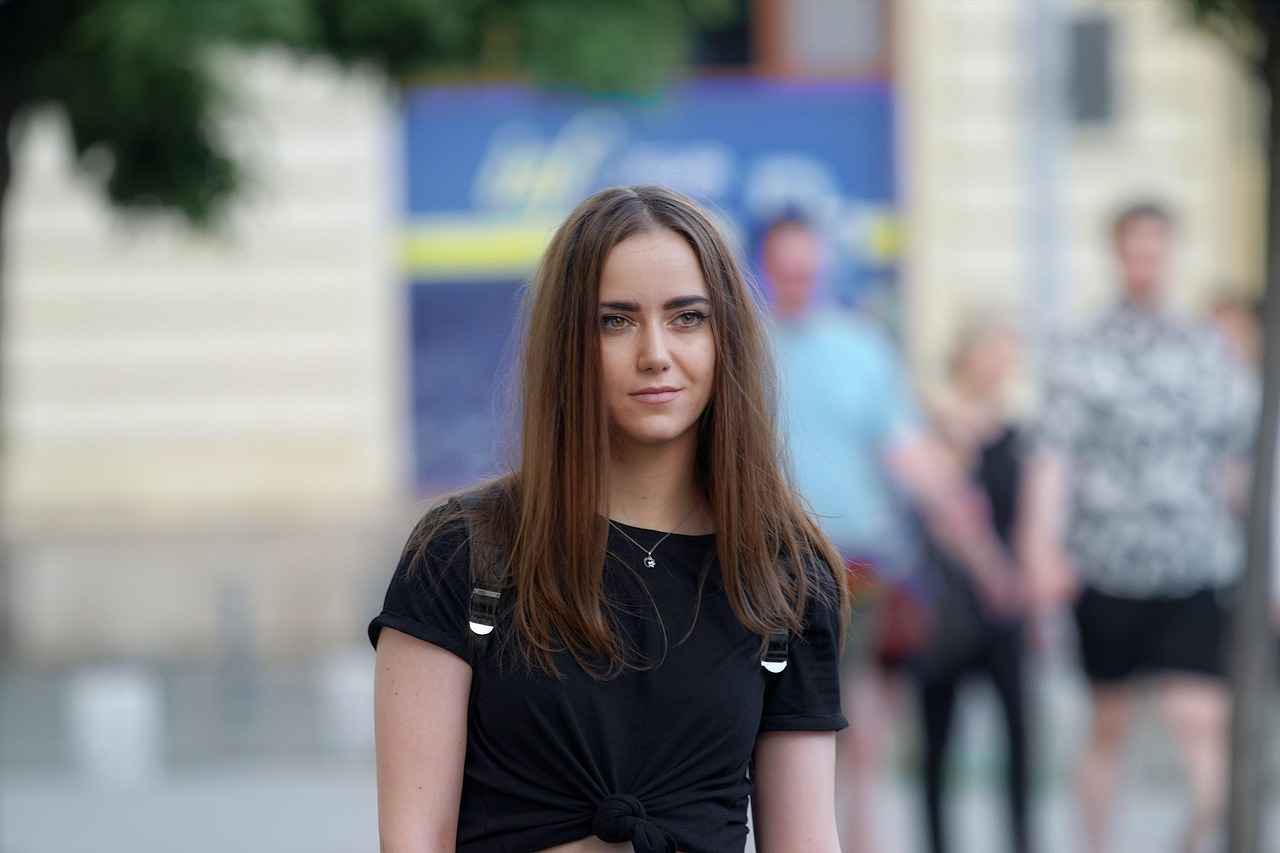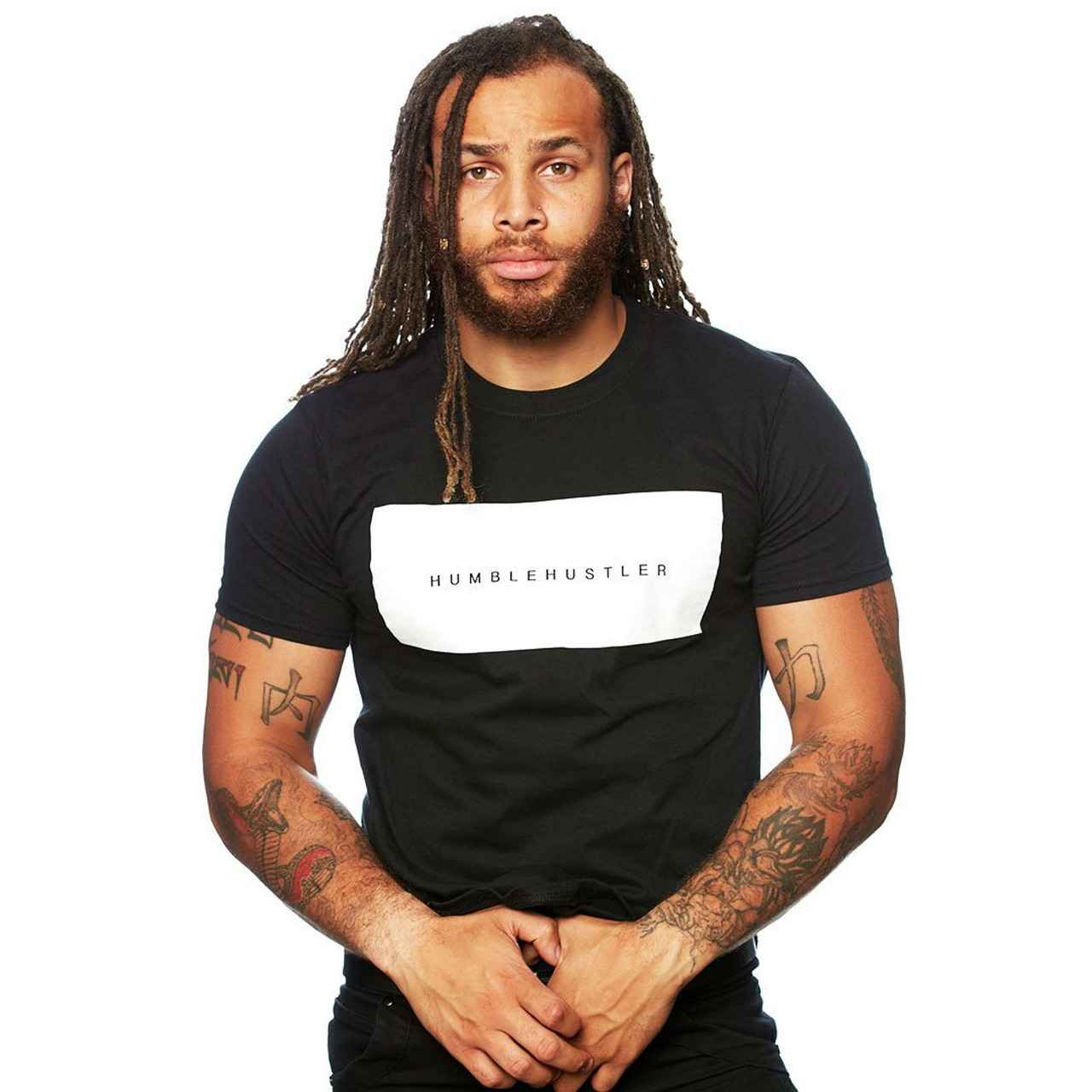This article provides essential tips and insights for creating custom t-shirt designs that stand out. From choosing the right materials to effective design techniques, we cover everything you need to know.
Understanding Your Audience
Identifying who will wear your custom t-shirt is crucial for design success. Tailoring your design to your audience’s preferences increases the likelihood of engagement and sales. Consider factors such as age, interests, and style preferences to create designs that resonate.
Choosing the Right Fabric
The fabric of your t-shirt plays a significant role in comfort and durability. Explore various fabric options to ensure your design not only looks great but feels great too.
- Cotton: The classic choice for softness and breathability.
- Polyester: Known for durability and moisture-wicking properties.
- Blends: Combine the best characteristics of different fabrics.
Design Elements to Consider
Effective design elements can make or break your custom t-shirt. Consider color schemes, typography, and graphics carefully to create a cohesive look.
- Color Psychology: Understanding how colors evoke emotions can influence buying decisions.
- Typography: The right font can enhance readability and convey your brand’s personality.
Printing Techniques Explained
Different printing methods can significantly affect the final product. Understanding the pros and cons of each technique helps in choosing the right one for your design.
- Screen Printing: Ideal for bulk orders, providing vibrant colors.
- Direct-to-Garment (DTG): Best for detailed designs and smaller runs.
Marketing Your Custom T-Shirts
Once your custom t-shirt is designed, effective marketing strategies are essential for reaching your target audience. Explore various platforms to promote your creations.
- Social Media: Share designs and customer testimonials to build a following.
- Collaborations: Partnering with influencers can expand your audience.
Conclusion: Bringing Your Vision to Life
Creating custom t-shirts is an exciting venture that combines creativity with strategy. By following these tips, you can successfully design, produce, and market your unique t-shirts.

Understanding Your Audience
Identifying who will wear your custom t-shirt is crucial for achieving design success. Knowing your audience allows you to tailor your designs to their preferences, significantly increasing the likelihood of engagement and sales. When creating custom t-shirts, consider the following key aspects:
- Demographics: Understand the age, gender, and lifestyle of your target market. This information helps you create designs that resonate with them.
- Interests and Hobbies: Knowing what your audience enjoys can inspire your design choices, from graphics to slogans.
- Fashion Trends: Stay updated on current fashion trends that appeal to your audience. Incorporating popular styles can enhance the appeal of your t-shirts.
- Feedback and Engagement: Engage with potential customers through surveys or social media polls to gather insights on their preferences.
Moreover, understanding your audience extends beyond just aesthetics. It also involves recognizing their values and beliefs. For instance, if your target audience is environmentally conscious, consider using sustainable materials and promoting eco-friendly practices in your production process.
To further enhance your design strategy, create personas that represent different segments of your audience. This practice helps in visualizing who you are designing for and allows for more targeted marketing strategies. By focusing on these elements, you can create custom t-shirts that not only look great but also connect with your audience on a deeper level.
In conclusion, taking the time to understand your audience is an essential step in the custom t-shirt design process. By aligning your designs with their preferences, you can boost engagement and drive sales, making your venture more successful.

Choosing the Right Fabric
for your custom t-shirt is a critical step that directly impacts both its comfort and durability. Understanding the different fabric options available can help you create a design that not only looks appealing but also feels good to wear.
When selecting the fabric, consider the following popular options:
- Cotton: This classic choice is renowned for its softness and breathability. Cotton t-shirts are perfect for casual wear and are gentle on the skin, making them ideal for everyday use.
- Polyester: Known for its durability and moisture-wicking properties, polyester is a great option for athletic wear. It helps keep the wearer dry during physical activities and is resistant to shrinking and wrinkles.
- Blends: Combining cotton and polyester can offer the best of both worlds. These blends provide the comfort of cotton while enhancing the durability and wrinkle resistance of polyester.
Another crucial aspect to consider is the fabric weight. The weight of the fabric affects how the t-shirt drapes and feels:
- Lightweight fabrics are excellent for warmer weather, providing breathability and comfort.
- Heavier fabrics offer more warmth and structure, making them suitable for cooler climates or layered outfits.
Ultimately, the fabric you choose should align with your design intent and the needs of your target audience. By carefully selecting the right material, you can ensure that your custom t-shirt not only looks great but also delivers the comfort and durability that wearers expect.
In conclusion, investing time in understanding fabric options is essential for creating a successful custom t-shirt. Whether you opt for cotton, polyester, or a blend, the right choice will enhance the overall quality and appeal of your design.
Popular Fabric Types
When it comes to creating custom t-shirts, the choice of fabric is a pivotal factor that influences not only the look but also the feel and functionality of the garment. Below, we explore some of the most common fabric types used in custom t-shirt production, highlighting their unique benefits and characteristics.
- Cotton: Known for its softness and breathability, cotton is a classic choice for custom t-shirts. It is comfortable against the skin, making it ideal for everyday wear. Cotton t-shirts are also highly absorbent, which is great for casual settings. However, they may shrink or wrinkle more easily compared to synthetic fabrics.
- Polyester: This fabric is appreciated for its durability and moisture-wicking properties. Polyester t-shirts are often favored for athletic wear due to their ability to keep the wearer dry during physical activities. Additionally, polyester is resistant to fading and stretching, making it a long-lasting option for custom designs.
- Blends: Fabric blends, such as cotton-polyester mixes, combine the best attributes of both materials. These blends offer the softness of cotton along with the durability of polyester. They tend to be less prone to wrinkles and shrinkage, making them a practical choice for custom t-shirts that require both comfort and longevity.
- Rayon: Rayon is a semi-synthetic fabric known for its luxurious feel and excellent drape. It is often used in fashion-forward t-shirt designs, providing a stylish alternative to traditional fabrics. However, rayon can be less durable and may require special care during washing.
- Tri-Blend: Tri-blend fabrics typically consist of cotton, polyester, and rayon. This combination results in a lightweight, super-soft t-shirt that has a unique texture. Tri-blends are popular for their vintage look and are often used in custom t-shirt designs aimed at a trendy audience.
In summary, the choice of fabric for your custom t-shirt can significantly impact its overall quality, comfort, and aesthetic appeal. By understanding the unique benefits of each fabric type, you can make an informed decision that aligns with your design vision and target audience.
Cotton: The Classic Choice
Cotton has long been celebrated as the classic choice for custom t-shirts, and for good reason. Its softness and breathability make it a top contender for casual wear, ensuring comfort throughout the day. Whether you’re lounging at home, hitting the gym, or out with friends, cotton t-shirts provide the perfect blend of style and comfort.
One of the key benefits of cotton is its natural fiber composition, which allows for excellent air circulation. This property helps in regulating body temperature, making cotton t-shirts an ideal choice for warmer climates or during the summer months. Additionally, cotton is hypoallergenic, making it suitable for individuals with sensitive skin.
When it comes to customization, cotton t-shirts offer a versatile canvas for various printing techniques. The fabric absorbs inks well, resulting in vibrant and long-lasting designs. This quality is particularly advantageous for those looking to create eye-catching graphics or intricate patterns.
| Benefits of Cotton T-Shirts | Details |
|---|---|
| Comfort | Soft texture and breathability ensure all-day comfort. |
| Durability | With proper care, cotton t-shirts can last for years. |
| Eco-Friendly | Biodegradable and often sourced from sustainable farms. |
| Versatility | Can be dressed up or down for various occasions. |
Moreover, cotton t-shirts are easy to care for. They can be machine washed and dried without losing their shape or quality, making them a practical choice for everyday wear. This ease of maintenance is a significant factor for many consumers when selecting their apparel.
In conclusion, cotton remains a timeless fabric for custom t-shirts, balancing comfort, durability, and style. Its ability to cater to various preferences and needs makes it a staple in the world of fashion. For anyone looking to create custom apparel, cotton is undoubtedly a wise choice.
Polyester: The Performance Fabric
Polyester has emerged as a favored fabric choice in the fashion and sports industries due to its remarkable durability and moisture-wicking properties. These characteristics make it particularly suitable for athletic wear and active lifestyles, where both performance and comfort are essential.
Unlike natural fibers, polyester is engineered to withstand wear and tear, making it an excellent option for those who engage in rigorous physical activities. Its ability to resist shrinking, stretching, and fading ensures that garments maintain their original fit and color over time. This resilience is a significant advantage for athletes who need clothing that can endure the demands of their training schedules.
One of the standout features of polyester is its moisture-wicking capability. The fabric is designed to pull sweat away from the skin and allow it to evaporate quickly, keeping the wearer dry and comfortable even during intense workouts. This property is particularly beneficial for athletes, as it helps regulate body temperature and enhances overall performance.
Furthermore, polyester is often blended with other fabrics, such as cotton, to create a hybrid that combines the best of both worlds. These blends can offer the softness of cotton while retaining the durability and moisture management of polyester, making them ideal for casual wear as well.
In addition to its functional benefits, polyester is also easy to care for. It is machine washable and dries quickly, which is a significant convenience for those with busy lifestyles. This practicality, combined with its affordability, makes polyester a go-to choice for custom t-shirt designs aimed at active individuals.
In conclusion, polyester stands out as a performance fabric that meets the needs of both athletes and casual wearers alike. Its durability, moisture-wicking properties, and ease of maintenance make it an ideal choice for anyone seeking comfort and longevity in their clothing.
Fabric Weight Considerations
The weight of the fabric is a crucial factor when designing custom t-shirts, as it directly impacts both the feel and drape of the garment. Understanding the different weights of fabric can help you make informed choices that enhance the overall quality and comfort of your t-shirt.
Lighter Fabrics
- Lighter fabrics, typically weighing around 3.5 to 4.5 ounces per square yard, are ideal for warm weather. They offer a breathable and airy feel, making them perfect for summer outings, casual wear, and sports activities.
- These fabrics tend to have a more relaxed drape, allowing for greater movement and comfort, which is essential for active lifestyles.
- Common lighter fabric options include cotton blends and jersey knits, both of which provide a soft touch against the skin.
Heavier Fabrics
- On the other hand, heavier fabrics, generally weighing over 5 ounces per square yard, provide more structure and durability. These options are excellent for cooler weather, as they offer added warmth and can be layered with other clothing.
- Heavier fabrics, such as fleece or thicker cotton, are often used for long-sleeve t-shirts or sweatshirts, making them suitable for outdoor activities in fall and winter.
- These fabrics can also lend a more premium feel to your custom t-shirt, appealing to customers looking for quality and longevity in their clothing.
In conclusion, the choice of fabric weight is a fundamental aspect of t-shirt design that should not be overlooked. By considering the intended use and the climate in which the t-shirt will be worn, you can select the right fabric weight that enhances both the aesthetic and functional qualities of your custom design.

Design Elements to Consider
Design Your Own Custom T-Shirt: Tips for Success
Creating a custom t-shirt that truly stands out requires careful consideration of various design elements. Among these, color schemes, typography, and graphics are pivotal in establishing a cohesive and appealing look. Understanding how to effectively combine these elements can significantly enhance the impact of your t-shirt design.
Colors play a crucial role in conveying emotions and messages. A well-thought-out color scheme can evoke feelings that resonate with your target audience. For instance, vibrant colors may attract a younger demographic, while muted tones might appeal to a more mature crowd. Consider using complementary colors to create visual interest and harmony.
The typography you select is just as important as the graphics you include. Fonts can communicate your brand’s personality and affect readability. It’s essential to choose a font that not only aligns with your brand identity but also remains legible from a distance. Experiment with font pairing, using a bold typeface for headlines and a simpler one for body text to create a balanced design.
Graphics are often the centerpiece of a t-shirt design. Whether you opt for intricate illustrations or simple logos, ensure that your graphics are high-quality and relevant to your theme. Consider how the graphics will look on different fabric colors and choose designs that maintain their integrity across various printing techniques.
To achieve a cohesive look, all design elements must work together harmoniously. This means aligning your color choices, typography, and graphics to tell a unified story. Before finalizing your design, take a step back and assess how each element interacts with the others. A well-executed design will not only attract attention but also foster a connection with the wearer.
In conclusion, effective design elements are essential for creating custom t-shirts that resonate with your audience. By carefully considering color schemes, typography, and graphics, you can craft a design that not only looks great but also communicates your brand’s message effectively.
Color Psychology in Design
Color is a powerful tool in design, capable of evoking emotions and influencing consumer behavior. Understanding the principles of color psychology is essential for anyone looking to create impactful designs, especially in the realm of custom t-shirts.
Different colors can trigger various emotional responses. For instance:
- Red: Often associated with passion and excitement, red can stimulate appetite and increase energy levels.
- Blue: This color conveys trust and reliability, making it a popular choice for brands aiming to create a sense of security.
- Green: Symbolizing nature and tranquility, green is often used to promote health and wellness.
- Yellow: Bright and cheerful, yellow can evoke feelings of happiness and optimism, drawing attention to your design.
- Purple: Associated with luxury and creativity, purple can add a touch of sophistication to your custom t-shirt.
When designing your custom t-shirt, consider the emotions you want to evoke in your audience. The right color combination can enhance the message of your design and make it more appealing to potential buyers.
Moreover, it’s important to think about the context in which your t-shirt will be worn. For example, if you’re designing for a fitness brand, using vibrant colors like red or orange can energize and motivate wearers. Conversely, if your target audience is professionals, opting for muted tones like navy or gray might be more appropriate.
Incorporating color psychology into your design strategy not only helps in creating visually appealing t-shirts but also aligns your products with the emotional needs of your target market. By understanding how colors influence perception and behavior, you can craft designs that resonate deeply with your audience.
In conclusion, leveraging color psychology is a vital aspect of effective design. By choosing colors that evoke the desired emotions and align with your brand message, you can significantly enhance the appeal and marketability of your custom t-shirts.
Typography Choices
The typography you select for your custom t-shirt plays a crucial role in communicating your brand’s identity and enhancing the overall design. It is not just about aesthetics; the right font can significantly impact readability and the emotional response of your audience. Here are some key considerations when choosing typography for your t-shirt designs:
- Brand Personality: Different fonts evoke different feelings. A playful font may suggest a fun and casual brand, while a serif font can convey elegance and tradition. Choose a typeface that aligns with your brand’s message.
- Readability: Ensure that your text is easy to read from a distance. This is especially important for t-shirts, as they are often viewed from afar. Avoid overly intricate fonts that can confuse the reader.
- Contrast and Color: The color of your typography should contrast well with the t-shirt fabric. High contrast improves visibility, making your message stand out.
- Font Pairing: If your design includes multiple fonts, make sure they complement each other. A common practice is to pair a bold font with a simpler one to create a harmonious look.
- Size and Scale: The size of your typography should fit the overall design. Large, bold text can be striking, while smaller text may work for subtler designs. Consider the hierarchy of information to guide the viewer’s eye.
In conclusion, the typography you choose is more than just a design element; it is a vital part of your brand’s communication strategy. By carefully selecting fonts that resonate with your audience and align with your brand’s identity, you can create t-shirts that not only look great but also effectively convey your message.

Printing Techniques Explained
When it comes to creating custom t-shirts, the printing method you choose can greatly influence the final product’s quality, appearance, and durability. Each technique has its unique advantages and disadvantages, making it essential to understand them before making a decision. Here, we delve into some of the most popular printing methods used in the t-shirt industry.
- Screen Printing
Screen printing is one of the oldest and most widely used methods for t-shirt printing. It involves creating a stencil (or screen) and using it to apply layers of ink onto the fabric. This method is particularly effective for bulk orders and designs with limited colors. The vibrant colors produced are long-lasting and withstand multiple washes. However, it may not be cost-effective for smaller runs due to setup costs.
- Direct-to-Garment (DTG) Printing
DTG printing is a newer technology that allows for detailed designs with a wide range of colors. This method uses inkjet technology to print directly onto the fabric, making it ideal for intricate graphics and smaller orders. While DTG offers excellent detail and color vibrancy, it may not be as durable as screen printing and can be more expensive per unit for larger batches.
- Heat Transfer Printing
This method involves printing designs onto heat transfer paper and then applying heat and pressure to transfer the design onto the t-shirt. Heat transfer printing is versatile and can produce high-quality images. However, it may not be as durable as screen printing, and the feel of the print can be less natural compared to other methods.
- Sublimation Printing
Sublimation is a unique method that works best on polyester fabrics. It uses heat to transfer dye onto the fabric, resulting in vibrant, long-lasting colors that become part of the material. This method is excellent for all-over prints but is limited to light-colored polyester garments.
In conclusion, understanding the various printing techniques available is crucial for anyone looking to create custom t-shirts. Each method has its strengths and weaknesses, and the choice largely depends on your specific needs, including design complexity, order size, and budget. By carefully evaluating these factors, you can select the printing technique that best aligns with your vision and ensures a high-quality final product.
Screen Printing
is a highly sought-after technique in the custom apparel industry, particularly for those looking to fulfill bulk orders. This method is celebrated for its ability to produce vibrant colors and long-lasting durability, making it an excellent choice for various applications, from promotional events to fashion statements.
One of the primary advantages of screen printing is its efficiency in handling simple designs that utilize fewer colors. This is because each color in a design requires a separate screen, which can make complex designs more labor-intensive and costly. Therefore, businesses and designers often opt for bold graphics or minimalist styles that maximize the visual impact while keeping production costs manageable.
Moreover, screen printing offers a variety of ink options, including plastisol, water-based, and discharge inks, each providing different finishes and textures. For instance, plastisol inks are known for their opacity and durability, making them ideal for dark fabrics, while water-based inks give a softer feel and are more environmentally friendly.
In addition to its aesthetic benefits, screen printing is also recognized for its cost-effectiveness in larger quantities. The initial setup costs may be higher due to the screens and equipment required, but the price per unit decreases significantly as the order size increases. This makes it a preferred choice for businesses looking to produce promotional merchandise or team uniforms.
However, it is essential to consider the limitations of screen printing. The method is less effective for designs that require intricate details or a wide range of colors. For such cases, alternatives like Direct-to-Garment (DTG) printing may be more suitable, allowing for full-color designs and detailed imagery.
In conclusion, screen printing remains a reliable choice for those seeking vibrant, durable custom apparel, especially when working with simpler designs. Understanding its advantages and limitations will help you make informed decisions for your next custom t-shirt project.
Direct-to-Garment (DTG) Printing
is revolutionizing the world of custom apparel by offering unparalleled design capabilities. This innovative printing technique utilizes advanced inkjet technology to apply vibrant colors directly onto fabric, allowing for highly detailed designs and a vast spectrum of hues. Unlike traditional printing methods, DTG is particularly well-suited for intricate graphics and smaller production runs, making it an ideal choice for artists and designers looking to bring their visions to life.
One of the most significant advantages of DTG printing is its ability to produce complex images with a high level of detail. Whether it’s a photographic print or a multi-layered design, DTG can handle it all without compromising quality. This makes it perfect for brands that want to showcase their creativity and uniqueness through their custom t-shirts.
Moreover, DTG printing allows for a wide range of colors, enabling designers to experiment with vibrant palettes and subtle gradients. This flexibility not only enhances the visual appeal of the garments but also caters to diverse consumer preferences. With DTG, the limitation of color constraints often seen in other printing techniques is virtually eliminated.
Another noteworthy aspect of DTG printing is its eco-friendliness. Many DTG printers use water-based inks, which are less harmful to the environment compared to traditional plastisol inks. This aspect appeals to environmentally conscious consumers who prioritize sustainability in their purchasing decisions.
In conclusion, DTG printing stands out as a highly effective method for producing custom t-shirts that feature detailed designs and a wide array of colors. Its suitability for smaller runs and intricate graphics makes it a favored choice among creatives and businesses alike, allowing them to express their unique styles while meeting the demands of the modern market.

Marketing Your Custom T-Shirts
Once your custom t-shirt is designed, implementing effective marketing strategies is crucial to reach your target audience successfully. Without a well-thought-out marketing plan, even the most creative designs may go unnoticed. Here are some strategies to consider:
- Utilize Social Media Platforms: Social media is an invaluable tool for promoting your creations. Platforms like Instagram, Facebook, and TikTok allow you to showcase your designs through engaging visuals. Regularly post high-quality images of your t-shirts, share behind-the-scenes content, and engage with your followers. Consider using targeted ads to reach specific demographics that align with your brand.
- Leverage Influencer Collaborations: Partnering with influencers can significantly amplify your reach. Influencers who resonate with your target audience can introduce your t-shirts to their followers, enhancing credibility and visibility. Choose influencers whose style aligns with your brand for authentic promotion.
- Explore E-commerce Platforms: Setting up an online store on platforms like Shopify or Etsy can broaden your market reach. These platforms provide tools to streamline sales and marketing, making it easier for customers to find and purchase your t-shirts.
- Engage in Local Events: Participating in local markets, fairs, or community events allows you to showcase your t-shirts in person. This face-to-face interaction helps build a personal connection with potential customers and can lead to immediate sales.
- Implement Email Marketing: Building an email list is a powerful way to keep your audience updated on new designs, promotions, and events. Regular newsletters can help maintain interest and encourage repeat purchases.
In conclusion, effective marketing is essential to ensure your custom t-shirts reach the right audience. By utilizing a mix of social media, influencer partnerships, e-commerce platforms, local events, and email marketing, you can significantly enhance your brand’s visibility and drive sales.
Social Media Strategies
In today’s digital age, leveraging social media platforms is essential for any business, especially for those involved in custom t-shirt design. Social media not only helps in amplifying your reach but also fosters engagement with potential customers. Here are some effective strategies to maximize your impact:
- Showcase Your Designs: Regularly post high-quality images of your custom t-shirt designs. Use platforms like Instagram and Pinterest, which are visually driven, to attract attention and encourage shares.
- Behind-the-Scenes Content: Share the creative process behind your designs. This could include sketches, fabric selections, or even videos of the printing process. Such content humanizes your brand and builds a connection with your audience.
- Customer Testimonials: Highlight positive feedback from satisfied customers. Posting testimonials along with images of customers wearing your t-shirts can significantly enhance credibility and encourage new buyers.
- Engagement Through Polls and Questions: Use stories or posts to ask your audience about their preferences. This not only boosts engagement but also provides valuable insights into what your customers want.
- Utilize Hashtags Strategically: Research and use popular hashtags related to custom t-shirts and fashion. This practice increases the visibility of your posts and helps attract a broader audience.
- Run Contests and Giveaways: Organize contests where participants can win a custom t-shirt. This tactic can create buzz around your brand and encourage sharing among participants.
- Collaborate with Influencers: Partnering with social media influencers can significantly expand your reach. An influencer’s endorsement can introduce your brand to a new audience and enhance your credibility.
By implementing these strategies, you can effectively utilize social media to not only showcase your unique designs but also engage and grow your customer base. Remember, consistency is key in maintaining a strong online presence.
Collaborations and Partnerships
In the world of custom t-shirt design, partnering with influencers and local businesses can be a game changer for expanding your audience. These collaborations not only enhance your visibility but can also significantly boost your sales.
When you team up with influencers who have a strong following in your target market, you tap into an established audience that may be interested in your designs. Influencers can showcase your custom t-shirts in a way that feels authentic and relatable, which often leads to higher engagement rates. They can share your product through various platforms, including Instagram, Facebook, and TikTok, providing a personal touch that resonates with their followers.
Additionally, collaborating with local businesses can create a mutually beneficial relationship. For example, if you partner with a local gym, you can create custom t-shirts that cater specifically to their clientele. This not only promotes your brand but also enhances the gym’s offerings, making it a win-win situation.
| Benefits of Collaborations | Description |
|---|---|
| Increased Visibility | Access to a wider audience through influencer or business networks. |
| Enhanced Credibility | Associating with trusted figures can boost your brand’s reputation. |
| Shared Resources | Collaborations can reduce marketing costs and enhance creative input. |
Furthermore, participating in community events or local markets with your partners can create a buzz around your brand. Offering exclusive designs or promotions during these events can attract potential customers and encourage them to make a purchase.
In conclusion, leveraging collaborations with influencers and local businesses is a strategic approach to expand your reach. By creating partnerships that align with your brand values and target audience, you can enhance your marketing efforts and drive sales for your custom t-shirts.

Conclusion: Bringing Your Vision to Life
Creating custom t-shirts is not just a creative outlet; it’s a strategic business opportunity that allows you to express your individuality while meeting market demands. Whether you’re launching a brand or designing for personal use, understanding the nuances of t-shirt design and production is essential to your success.
To begin with, understanding your audience is paramount. Conducting market research can help you identify your target demographic. Are they teenagers looking for trendy designs, or adults seeking comfortable, casual wear? Tailoring your designs to fit the preferences of your audience can significantly enhance engagement and sales.
Next, choosing the right fabric is crucial for both aesthetic and functional purposes. Cotton is often favored for its softness and breathability, making it ideal for everyday wear. On the other hand, polyester offers durability and moisture-wicking properties, which are perfect for athletic apparel. Assessing the fabric weight is also important; lighter fabrics are suitable for summer, while heavier materials provide warmth in cooler weather.
When it comes to design elements, pay attention to color psychology. Colors can evoke emotions and influence purchasing decisions, so selecting the right palette can make your t-shirt designs more impactful. Additionally, your choice of typography should reflect your brand’s personality, enhancing both readability and visual appeal.
Understanding various printing techniques is essential for achieving the desired quality in your custom t-shirts. Screen printing is popular for bulk orders due to its vibrant colors and durability, while Direct-to-Garment (DTG) printing is ideal for intricate designs and smaller quantities.
Once your custom t-shirts are ready, effective marketing strategies become vital. Utilizing social media platforms can significantly broaden your reach. Share engaging content, such as behind-the-scenes looks at your design process, to connect with potential customers. Collaborating with influencers or local businesses can also amplify your visibility and drive sales.
In conclusion, creating custom t-shirts is a rewarding venture that blends creativity with strategic planning. By following these tips and insights, you can successfully design, produce, and market your unique t-shirts, ensuring they resonate with your audience and stand out in the marketplace.
Frequently Asked Questions
- What materials are best for custom t-shirts?
When it comes to custom t-shirts, cotton is the classic choice for its softness, while polyester is great for durability and moisture-wicking. Blends can also offer the best of both worlds!
- How do I choose the right design elements?
Consider your audience’s preferences! Use color psychology to select colors that evoke the right emotions, and choose typography that reflects your brand’s personality and enhances readability.
- What printing technique should I use?
For bulk orders with simple designs, screen printing is ideal. If you want detailed graphics and a wide range of colors, go for Direct-to-Garment (DTG) printing!
- How can I effectively market my custom t-shirts?
Utilize social media to showcase your designs and engage with your audience. Collaborating with influencers or local businesses can also boost your visibility and sales!
- What should I consider when designing for my target audience?
Understanding your audience is key! Tailor your designs to their interests and preferences to increase engagement and sales.












